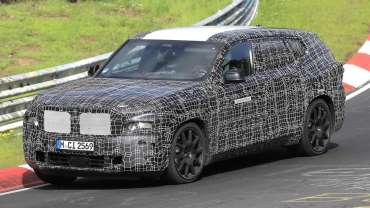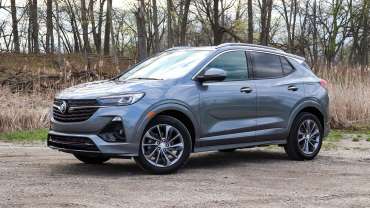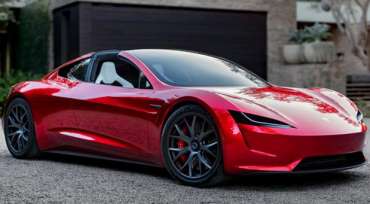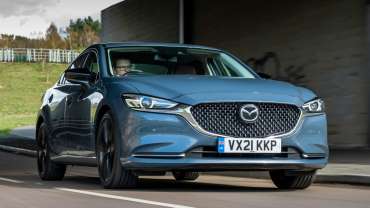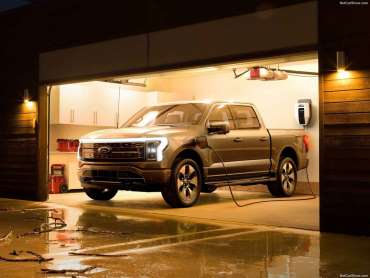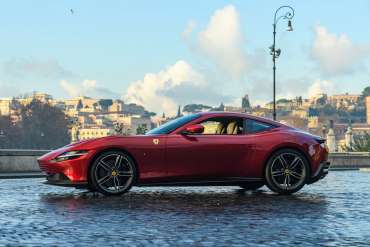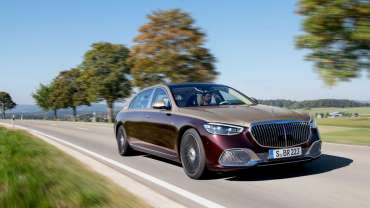
Worldcarblog.com
The BMW X8 is coming: giant flagship SUV aims for sleeker look
Flagship 2022 BMW X8 will rival premium large SUV models including the Range Rover and Mercedes GLS
The forthcoming BMW X8 SUV has been spotted undergoing track testing ahead of its reveal in 2022. When it arrives, the X8 will sit at the top of the brand’s SUV line-up as a sleeker alternative to the X7, rivalling the Range Rover Sport, Mercedes GLS and the Bentley Bentayga.
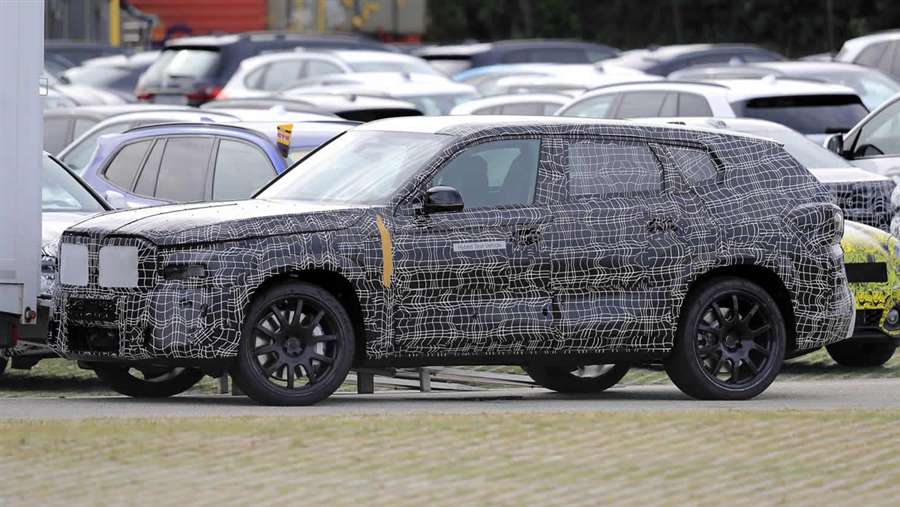
BMW has already trademarked both the ‘X8’ and ‘X8 M’ names, suggesting the new car could be joined by a flagship M Division model alongside regular versions. It’s also thought a plug-in hybrid version could also be added to the X8 line-up. As a range-topping model, we’re expecting the price tag for the X8 to start from over £100,000.
2022 BMW X8 SUV: dimensions, design and platform
The new X8 share’s its platform with the X7 SUV, so is likely to be very similar in size. However, like the BMW X2, X4 and X6, the X8 looks like it’ll be a sleeker version of the standard SUV on which it’s based. It’ll be as wide as the X7 but with a lower roofline tapering towards the rear windscreen. It’s likely to have a sportier focus than the X7, sacrificing some rear headroom and boot space for less boxy styling.
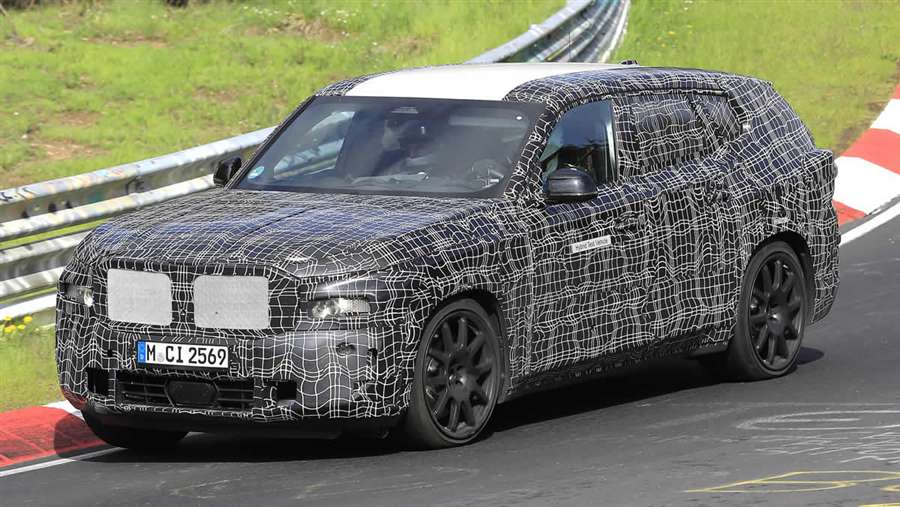
These latest spy shots give a clear look at the design of the new car, and its nose features a large pair of BMW's signature kidney grilles, along with a new split-level headlight design. The car’s wheelarches appear to be more prominent, with the side-profile boasting a sleeker roofline with a small rear spoiler. At the rear, there appears to be a sharply angled tailgate and an angular rear bumper housing two large exhaust tips.
Engines and performance
BMW has filed several X8 trademarks in the last few years but the filing of ‘X8 M’ is the first hint that a performance version is also in the pipeline. It may use the 4.4-litre twin-turbo V8 engine already employed in the BMW X5 M and M8, or a hybrid powertrain could be an alternative to make the X8 M even more powerful than these cars.
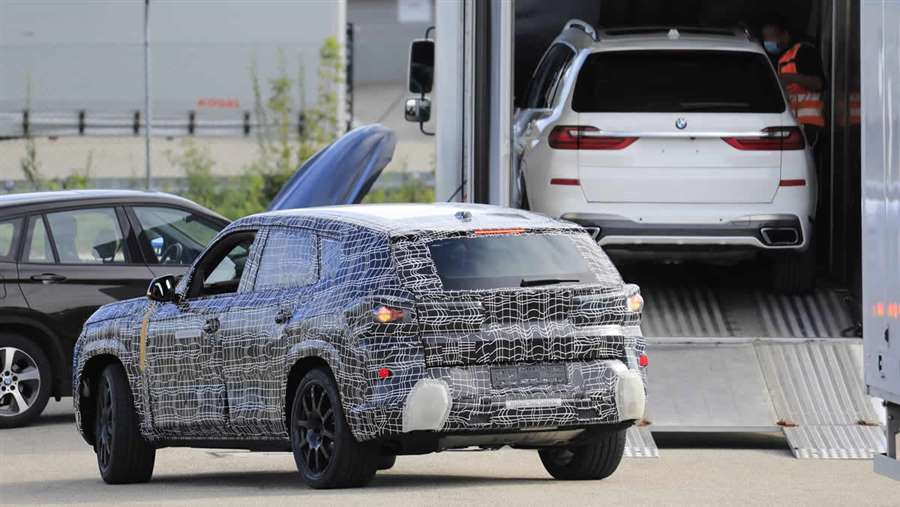
Previously, we spotted a development mule sporting ‘hybrid test vehicle’ stickers on it, so some form of electrification is almost guaranteed. We expect that BMW will offer the same plug-in hybrid powertrain as you get in the BMW X5 xDrive45e and 545e, which offers an impressive 50-mile electric range and a sub-six-second 0-62mph time.
Interior, technology and safety
While no details of the new car’s interior have been revealed yet, it’s likely the dashboard and interior of the X8 will be near-identical looking to the X7. It’ll also get the same technology, including an infotainment screen and a digital dial cluster measuring in at 12.3-inches each. BMW’s latest iDrive 8 operating system will also feature, along with safety technology such as a head-up-display, surround-view cameras and an array of driver assistance systems. Unlike coupe-SUV models such as the Audi Q8, which is only available with five seats, the X8 could retain the seven seat layout from it's X7 sibling thanks to it’s more upright roofline.
(carbuyer.co.uk)
2021 Buick Encore GX 1.3T FWD First Drive: Reasonable Doubt
Buick gives the Encore a little blue pill.
If Jay-Z was seeking a Buick when he asked for an "encore" in his 2003 song of the same name, then the legendary Brooklyn-born rapper is in luck, because the American brand now sells two Encores: the subcompact Encore and the larger, but not quite compact, Encore GX. Yet despite the SUVs' shared monikers, the Encore GX is neither a trim nor a mechanical relative of the Encore.
Instead, the 2021 Buick Encore GX forgoes its smaller sibling's aging underpinnings and four-cylinder engine for a newer General Motors platform and a pair of available three-cylinder engines. (Chevrolet also employs these mechanical pieces in its Trailblazer SUV.) A 137-hp turbocharged 1.2-liter I-3 comes standard across the board, but a more powerful 155-hp turbocharged 1.3-liter three-cylinder is available as a $395 option on Encore GX Select and Essence trims.
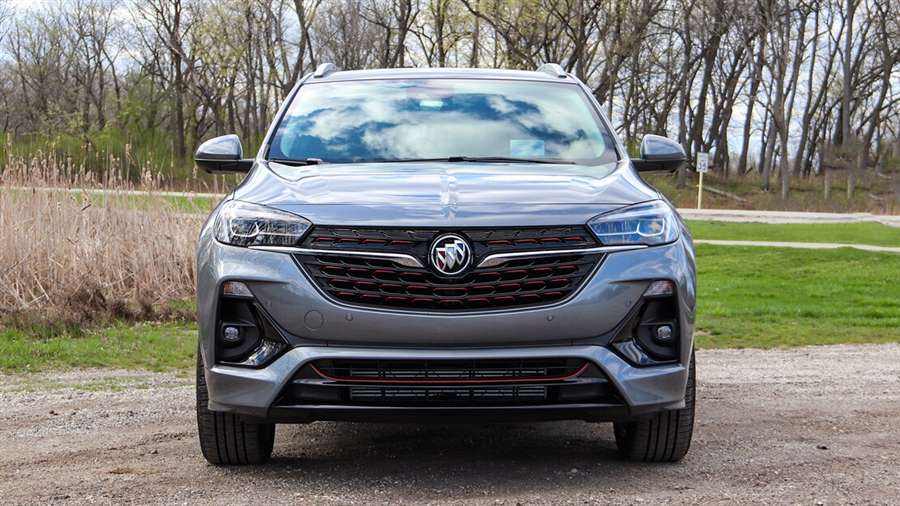
Weight A Minute
Regardless of engine, all Encore GX FWD models rely on a continuously variable automatic transmission (CVT) to serve as the middleman between the engine and drive wheels. Buick also fits the bigger engine under the hood of any Encore GX equipped with the optional ($2,000) all-wheel-drive system. Going the AWD route sidelines the CVT in favor of a nine-speed automatic transmission, but also adds around 180 pounds to the SUV's curb weight relative to its 1.3-liter-equipped FWD counterpart (which itself weighs about 40 pounds more than the equivalent 1.2-liter Encore GX).
With less mass to lug around and a responsive CVT, the Encore GX 1.3T FWD feels far livelier than its AWD kin. Although we were not able to bring this two-wheel-drive Buick to the track, we feel confident the less portly Encore GX FWD ought to cut a few ticks from the 9.3-second trot to 60 mph and 17.0-second run through the quarter mile we recorded from an Encore GX AWD.
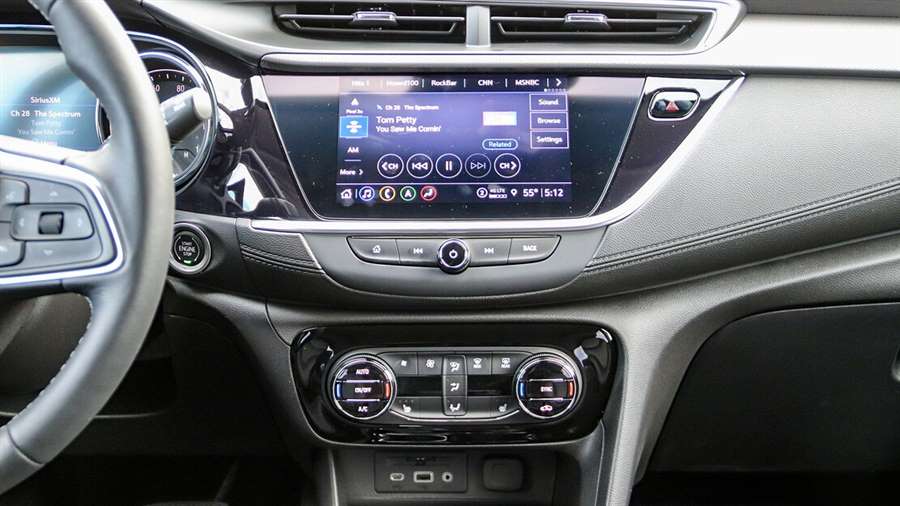
Still, we hesitate to call Buick's second-smallest SUV quick. Pinning the right pedal to pass slow-moving traffic at highway speed remains a rather tedious affair, which the CVT exacerbates by racing the I-3 toward its redline and causing a lot of noise without much thrust.
The powertrain performs more favorably around town, as the transmission works with the larger engine's peak 174 lb-ft of torque—available at a low 1,600 rpm—to spur the nearly 3,100-pound Encore GX forward from stop signs and stop lights with reasonable gusto and minimal droning (provided the CVT keeps the crankshaft spinning at less than 3,000 revs). In fact, the 171.4-inch-long Buick feels particularly adept in urban environments as its electric-assist steering's quick ratio and low effort make it easy to maneuver through narrow city streets and crowded parking garages.
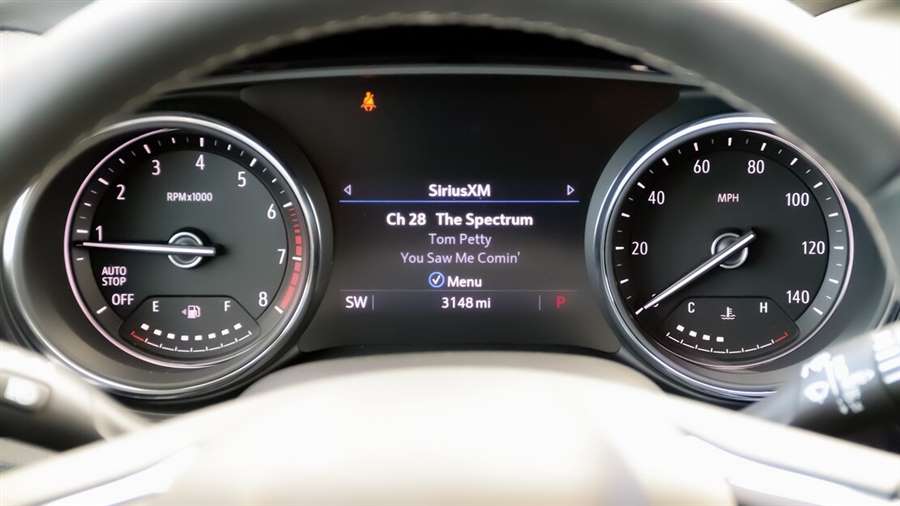
Rough Rider
If only the Encore GX's ride quality lived up to its Buick badge. Alas, the Encore GX's suspension tuning feels more befitting of a compact sports car than a near-luxury SUV. Instead of insulating its passengers from bumps in the road, the Encore GX seems to amplify every abrasion marking the tarmac. The stiff suspension setup makes riding in this Buick as uncomfortable as sharing an elevator with Hova and Solange Knowles at a 2014 Met Gala afterparty.
Add the $650 Sport Touring package and the Encore GX at least looks a little more the part of a hot hatchback, as the purely cosmetic kit adds body-color lower trim pieces, more aggressive front and rear fascias, red accents on the grille, special badging, and package-specific 18-inch wheels. The items add some extra flair to the tall and stubby Encore GX while also enhancing some of the SUV's more attractive design details, including its rear fender haunches and the upper window trim that gracefully merges with the rear hatch.

The Blueprint
Strangely, the Sport Touring package does not touch the Encore GX's interior. There is no special badging, sporty trim, or paddle shifters (there is a shifter-mounted rocker switch that affords control of seven ratios, though). The cabin is standard Encore GX, which is a generally inoffensive place, save for some chintzy faux stitching and mid-grade piano black plastic pieces on the dashboard and center console. Sure, a Mazda CX-30 both looks and feels richer, but the Encore GX's insides are certainly built to a reasonably high standard with materials that are—for the most part—unobjectionable.
The space benefits from an ergonomic design courtesy of its simple climate controls, intuitive and clear gauge cluster display, and high-mounted 8.0-inch touchscreen infotainment system, which comes standard with wireless Apple CarPlay and Android Auto compatibility. Additionally, a tall seating position offers a commanding view of the road ahead. Buick carves out plenty of space under the front seats for rear passengers to place their feet, and as a result, the Encore GX's rear bench feels more spacious than its 36.0 inches of legroom suggests. That middling figure falls short of competitors such as the Jeep Compass and Kia Seltos, which offer 38.3 and 38.0 inches of stretch-out space, respectively.
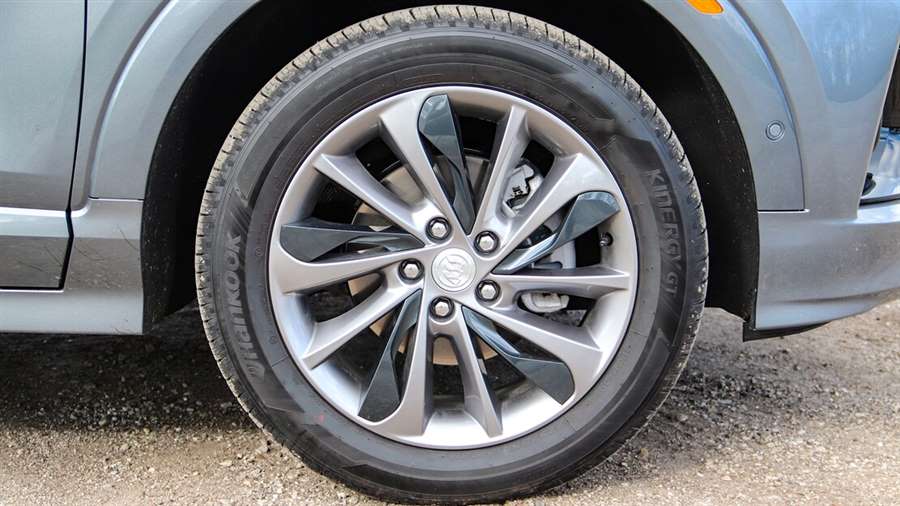
The Encore GX's cargo bay offers just 23.5 cubic feet of space behind the rear seats and 50.2 cubes with the 60/40-split seatbacks folded, sums that fall short of the Compass and Seltos by between 3.1 and 12.6 cubic feet. But the little Buick at least makes the most of its usable space by incorporating features such as a reconfigurable cargo floor and a flat-folding front passenger seat.
Dead Presidents
Nor is the Encore GX a value leader, as the model's $25,395 starting sum tops that of compact SUVs such as the $24,995 Chevrolet Equinox. Opt for the Buick's bigger 1.3T engine and the Encore GX's base price swells to $27,390, though that figure includes features missing from the base model such as heated front seats, a power driver's seat, dual-zone automatic climate control, and a blind-spot monitoring system. The mechanically similar $26,255 Chevrolet Trailblazer 1.3T, meanwhile, undercuts its Buick-badged cousin by $1,135.
Start adding items such as an in-dash navigation system, adaptive cruise control, a surround-view camera, and a head-up display, and the cost of the Encore GX 1.3T quickly balloons past $30,000. This is a hard pill to swallow considering a similarly equipped Trailblazer rings up for thousands of dollars less, and a top-of-the-line 175-hp Kia Seltos with AWD barely breaks $30,000.
We were never really sure we wanted a follow-up to the original Encore, let alone a second Encore model. The 2021 Encore GX 1.3T FWD improves upon the blueprint of its smaller and similarly named stablemate, even if this latest addition to the Encore family would be more deserving of an ovation if Buick improved the model's ride quality and value proposition.
(motortrend.com)
Tesla Roadster SpaceX to 100 km / h in just 1.1 seconds?
The Roadster will be a new addition to Tesla's offer after it enters production, resurrecting the nameplate that was worn by the first generation back in 2008.
It seems that the second generation is not at the top of Musk's list of priorities, considering that it is scheduled for this year, but we have not heard anything since 2017. This is expected considering that this is a special model of a California company with a high price, which is not sold as much as its mainstream colleagues, such as Model 3, writes Jutarnji.hr.
Namely, the 'killer' of super and hyper cars was discovered back in 2017 together with SpaceX's package for improved handling. However, rocket technology has another advantage - insane performance. We expected acceleration from 0 to 100 km / h in about 1.9 seconds, however, no one from Tesla provided a figure after the news of the SpaceX package. It seems that the second generation of Roadster, in addition to rocket technology, will also have rocket acceleration.
The exact acceleration time was revealed without much fanfare, so who noticed. Namely, one individual, who visited the Petersen Automobile Museum in California a few days ago, took several photos of the Roadster prototype, with the following description in the frame: '(...) time from 0-100 km / h for 1 , 1 second '.
To get a ‘bigger picture’, we will state that Rimac C_Two will reach the hundredth in 1.85 seconds, while Lotus Evia will do the same in less than 3 seconds. The second generation of Roadster is not worth comparing with hyper cars with internal combustion. We seem to be expecting a road car with the fastest acceleration in the world.
We learn that the base model will start at $ 200,000, while the Founder’s Series version will be $ 50,000 more expensive. Still, all 1,000 copies will probably be sold with the SpaceX package, for which the price is not yet known, but this tells us that it is worth every dollar.
New Mazda 6 Kuro Edition 2021 review
The Mazda 6 family car gets the brand’s special-edition Kuro treatment
Verdict
The Mazda 6 Kuro Edition is a good example of a dying breed of car. It gets plenty of standard equipment, the quality feels good enough for the price, it drives sweetly and offers enough practicality. However, combined with the naturally aspirated engine and Mazda’s reluctance to turn towards turbocharging for its petrol motors, a family saloon isn’t what buyers are after in 2021. We love that the 6 still exists, but fear that, as good as it is, many people will look past it in favour of a more-versatile SUV.
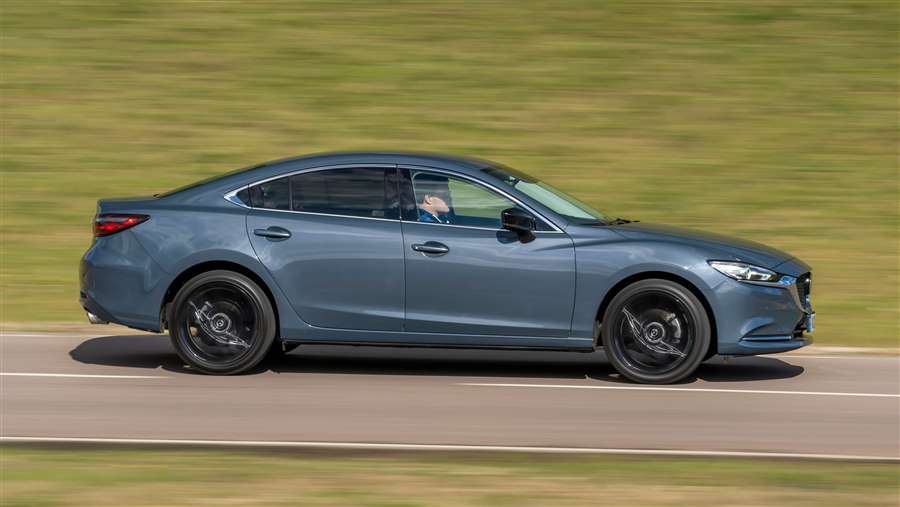
Mazda is a master of special editions; just look at its iconic MX-5 sports car and how many limited-run variants it has spawned to keep excitement high. Now the Japanese brand is trying to do the same with its Mazda 6 family saloon through this Kuro Edition trim. But is it injecting some life into a dying sector, or does the big family car still have merit in 2021 when buyers seem to be focusing on SUVs?
The Kuro Edition is available in saloon and ‘Tourer’ estate bodystyles, and it’s the former we’re testing here. Limited to just 100 cars in the UK (50 examples of each bodystyle), it features special Polymetal Grey Metallic paint to mark it out from other Mazda 6 models. The finish is included in the £29,250 starting price.
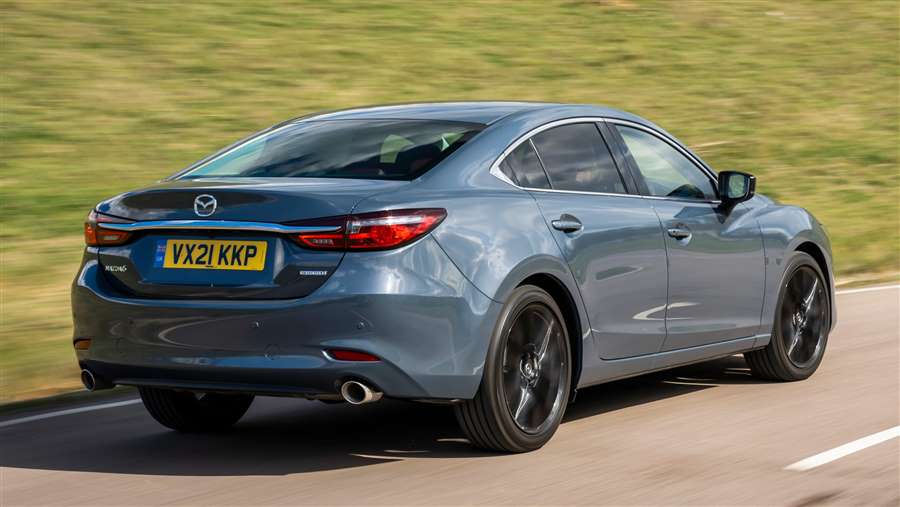
Kuro Edition cars are based on Sport spec when it comes to equipment, so they have a relatively generous tally that includes a reversing camera, an 11-speaker Bose stereo, keyless operation and a heated leather steering wheel to go with the standard-fit burgundy leather seats.
All Kuro cars use Mazda’s 162bhp 2.0-litre four-cylinder naturally aspirated petrol engine. With no turbo (like all of the firm’s petrol engines) it needs working, but it’s a sweeter unit than the 2.5-litre range-topper.
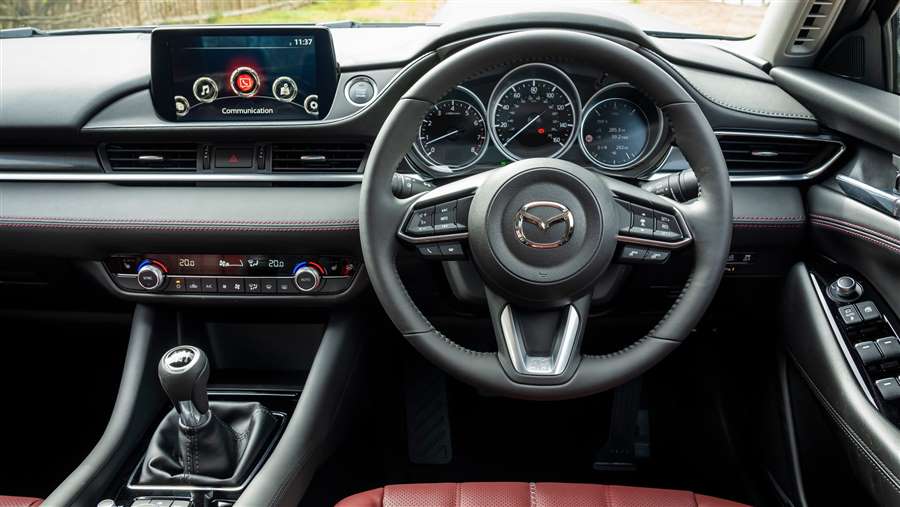
It’s revvier, which plays to the motor’s strengths. This is born out of a deficit of torque; with only 213Nm on tap it’s lacking when compared with turbocharged rivals, but at least the engine is willing.
The only problem is that’s not always how you want to drive a car like this, and with a sweetly controlled chassis that delivers a comfortable ride, the engine refinement is at odds with the rest of the package. Having to extend it into the upper reaches to avoid the flat spot lower down means it can get a bit noisy, but at least the six-speed manual transmission is a joy to use. There’s no automatic option on the Kuro Edition.
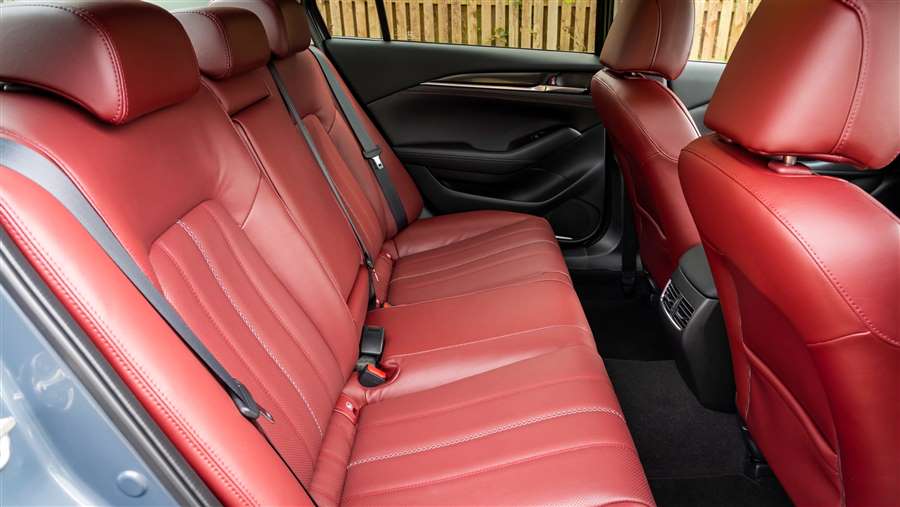
The ride feels sophisticated for a family saloon, though. The steering weight is lovely, there’s a good level of grip, and the suspension keeps the Mazda well composed through faster bends. Not being shackled by a higher ride height and a heavier body, like a similarly sized SUV, means the handling is refreshingly enjoyable for a family machine.
But it’s also smooth when travelling at speed and soft enough around town so as not to bump its occupants around.
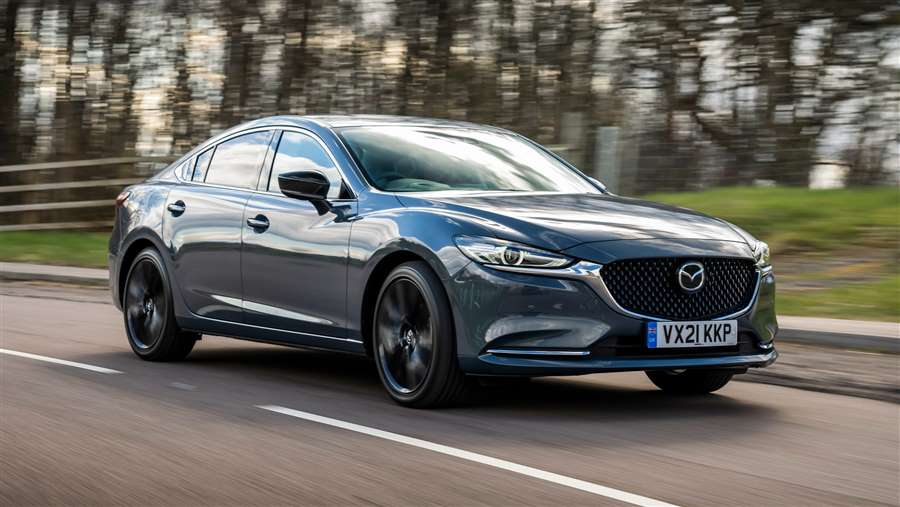
They won’t have quite as much space as in Mazda’s CX-5, talking of comparisons with SUVs, but the saloon’s 480-litre boot gives it more than enough luggage space and practicality for most occasions.
The Kuro Edition also has 19-inch alloys, automatic LED headlights, dual-zone climate control, Android Auto and wireless Apple CarPlay (which is a good, because the standard interface with sat-nav could be better), autonomous braking, blind-spot monitoring, all-round parking sensors and adaptive cruise control. The burgundy upholstery looks smart, while the materials are good for the price, but the infotainment system now feels outdated and clunky.
Otherwise, with claimed efficiency of 42.2mpg, the Mazda 6 Kuro Edition is a nicely rounded package, even if CO2 emissions of 152g/km mean it won’t be the most cost-effective company car choice in a sector aimed at buyers looking for just that.
(autoexpress.co.uk)
Historic moment: Ford unveils first electric F-150
How the average "redneck" will react to the fact that Ford's largest, most sought-after and loudest pick-up model F-150 will no longer make noise, we can only imagine. Despite that, the best-selling vehicle in the United States received an electric edition for the first time this year, called Lightning. It will have 563 hp, 4WD drive, it will arrive on the market next year, and its main rivals will be the electric Hummer and Tesla Cybertruck. Its trump card is the price, which is not significantly higher than standard models.
Ford's F Series has been made since 1948, and the 14th generation of the legendary model is currently in use. The best-selling vehicle in the United States was bought by as many as 730,000 people during the last extremely difficult year alone. Now, for the first time, this legendary "worker" received an electric version, which was presented last night.
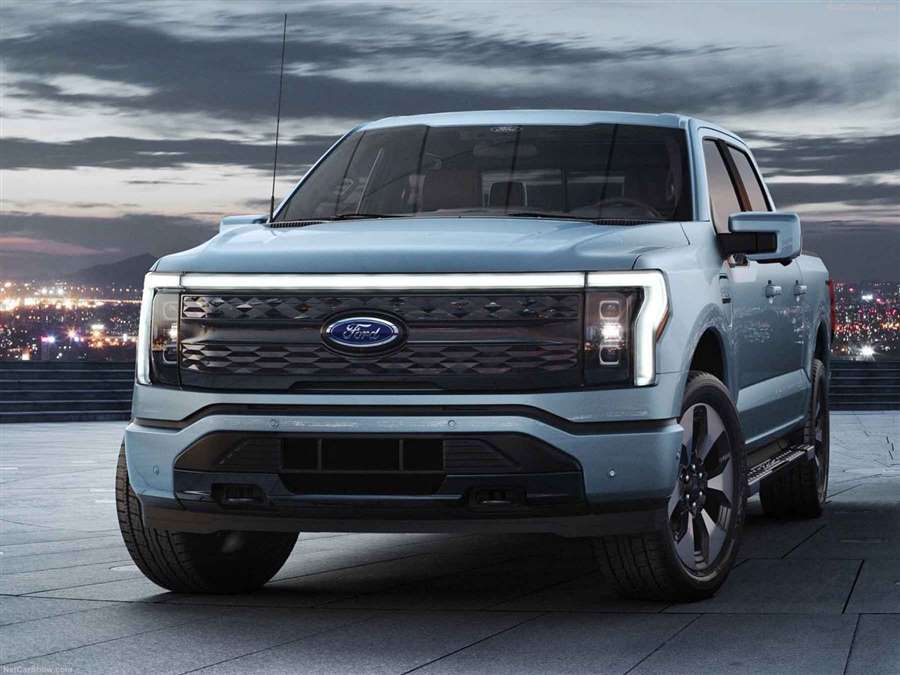
The Ford F-150 Lightning will have all-wheel drive, two electric motors with a total power of 563 hp and 1,050 Nm, which is also the highest torque ever offered in this pick-up model.
The huge truck will reach 100 km / h in just 4 seconds. It will be offered in two options when it comes to the battery, so the more powerful version will have a range of 480 km, and the weaker one 370 km. Charging on a fast charger will take about 40 minutes.
The largest load capacity will be 907 kg, and towing up to 4,536 kg. New technologies will also enable the F-150 to immediately calculate the electric range with the help of a scale for measuring the weight of cargo.
Since the electric motors are smaller than the conventional ones that powered the large pick-up, the Lightning version will also provide luggage space under the hood with a volume of 400 liters.
The new electric version retained the chassis of the classic F-150 (which is also offered as a hybrid), and an independent rear suspension.
The new F-150 will also debut Ford's new and huge 15.5-inch Sync 4A infotainment system, while the driver will have a 12-inch digital instrument panel in front of the driver.
The starting price with the electric pick-up will be 32,972 dollars, which is not much different from the versions with SUS engines.
Watch the video where Ford shows that the new F-150 Lightning can power even a house, as well as a number of electrical appliances.
Ferrari Roma review
Beautifully styled coupe mixes old school charm with cutting edge tech
Is the Ferrari Roma any good?
The term ‘entry-level’ has never been a particularly easy fit when it comes to Ferrari. The cars at this end of the line-up are far from affordable, after all, and once specified with a few options can easily find themselves knocking on the door of a more senior, mid-engined model.
What cars like the California T, Portofino and now the Roma do is represent a less intimidating and more usable introduction to Ferrari ownership – not as hard-edged as an F8 Tributo or astronomically expensive as an 812 Superfast, but in possession of enough Maranello magic to ensure their drivers go on to become Ferrari owners for life. Or so the theory goes.
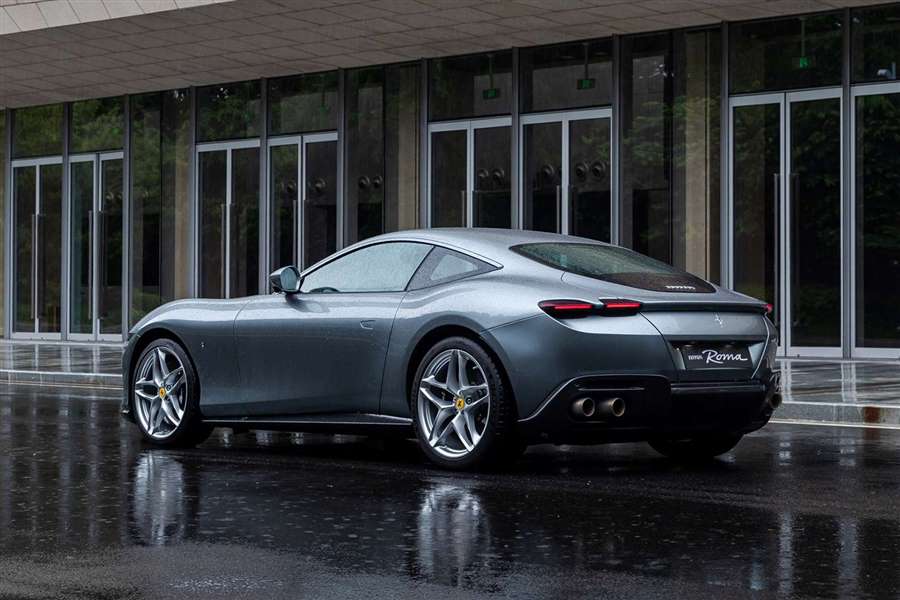
Trouble is, in order to make cars that are easy to use and live with, in years gone by they also felt a bit watered down – still astonishingly fast, just not quite as mind-blowingly so as something with the engine in the middle. Brilliant to drive, but with one or two modes missing from the firm's Manettino drive mode switch.
The Roma is a conscious effort to redress that balance, and it does so by harking back to a bygone era of luxury motoring inspired by 1950s and 60s Rome.
What's it like inside?
Is it all throwback styling with a retro interior? No – in fact it’s the opposite. As with the SF90 the Roma features an entirely digital cockpit made up from a large screen behind the wheel and another portrait infotainment unit in the centre.
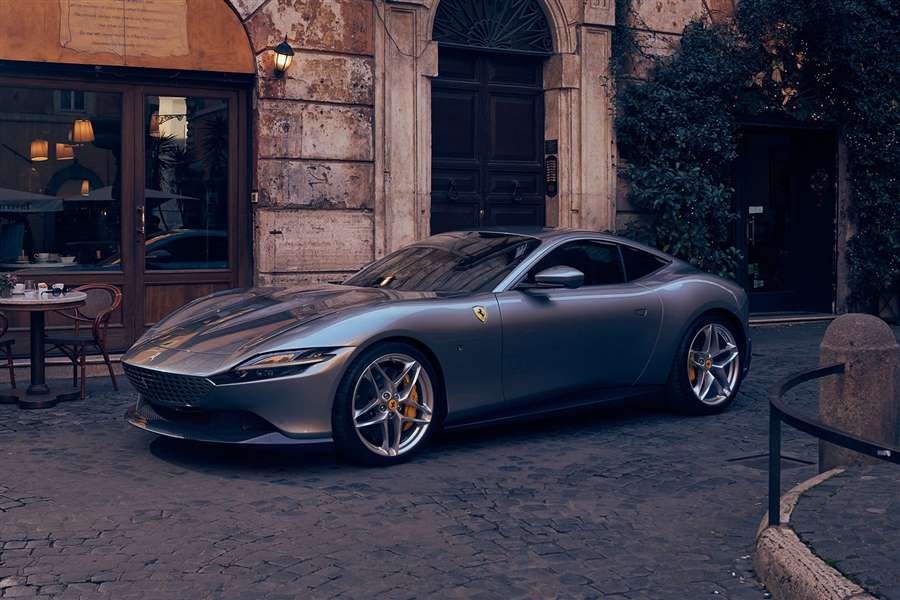
Hardly cutting edge (Audi gave us the Virtual Cockpit years ago) but a leap forward for this Italian maker, and typically it’s done so in the most Ferrari way imaginable.
2021 Ferrari Roma cabinEnlarge0videoEnlarge40photo
So you still get a massive central rev counter right in your eyeline, and while the wheel features lots more functions and controls than it used to, they’re only lit briefly when in use, before dimming away invisibly as to not distract you from the job of driving. Also, button free wheels look much cooler.
You could be excused for thinking a greater focus on top end performance would make the Roma twitchy and uncomfortable elsewhere, but the reality is far from it.
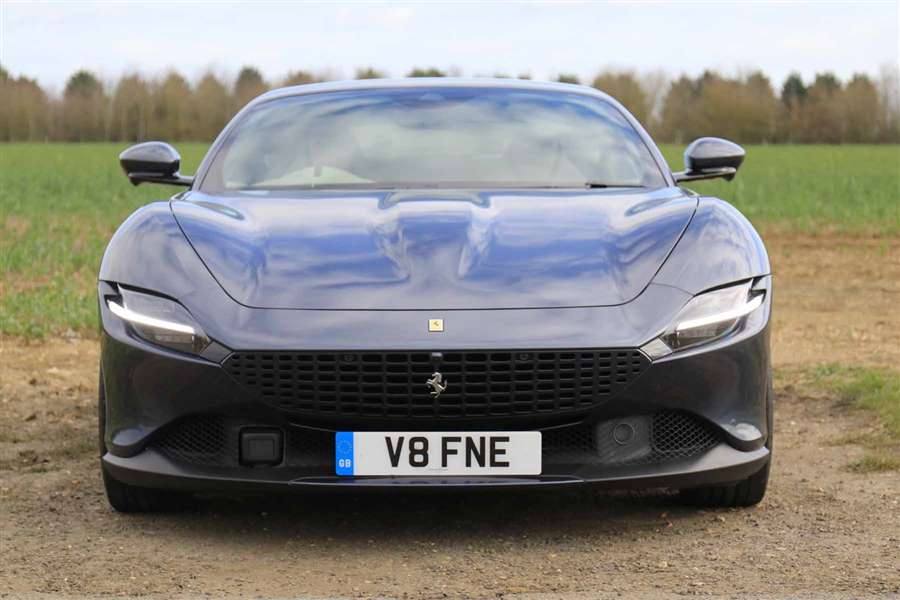
There’s also a very usable boot, and some slightly less usable rear seats, although the latter can be folded down to expand the luggage capacity even further.
What's it like to drive?
On this front the Roma also pushes the agenda onwards – as such you get five drive modes on the rotary Manettino switch (including Race) and underbody aero to help stick the car to the tarmac without ruining its sleek exterior lines with a permanent spoiler.
Ferrari hasn’t given these things to cars at this end of the spectrum before and that should go some way to explain its intent with the Roma. It’s a supremely brilliant car to drive fast, with accessible and friendly handling that makes the driver feel front and centre, while also providing a largely invisible safety net.
This is mostly down to a variety of driver aids including the latest version of Side Slip Control. This will allow the rear end of the car to step out during exuberant cornering, but not so much that you end up facing the wrong way.
The ride is surprisingly supple and can be slackened off even in the racier modes by pressing the Manettino button to enable Bumpy Road mode.
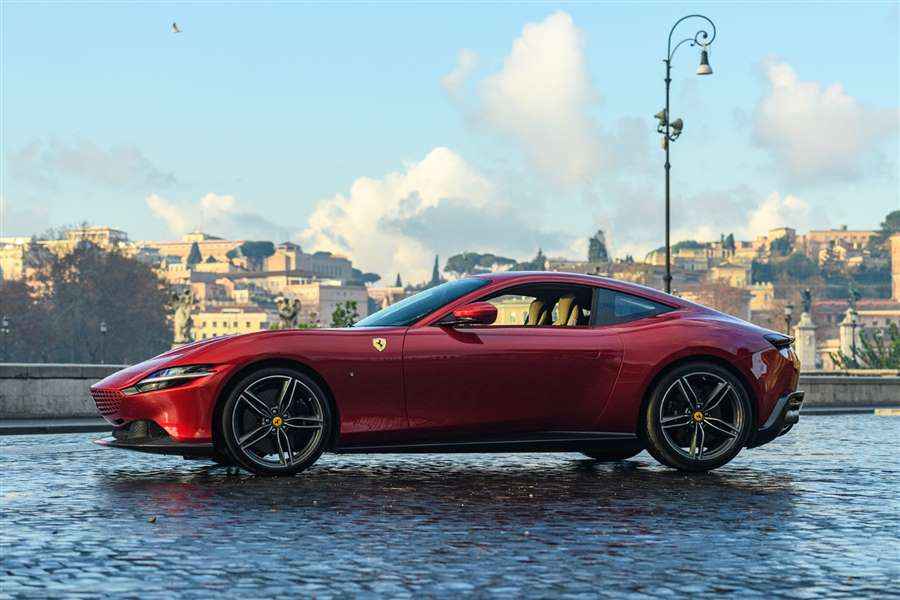
In fact we think that it’s in one of the more relaxed settings, with the engine barely ticking over at motorway speed, where the Roma is most impressive. You could happily waft down to an Alpine pass, arrive without feeling broken, and then pick it to bits in Race mode. An impressive combination.
Ferrari Roma practicality and boot space
This being a more daily-driver capable Ferrari means there needs to be more than a small nod towards practicality. Things like single-piece carbon bucket seats with race harnesses and a stripped-out cockpit with nowhere to store a bag of sweets are unlikely to win a buyer’s heart here.
How much space is there?
In the back there is a pair of seats suitable for very small children, or more realistically, additional luggage for a weekend away. They’re no smaller than you get in a Porsche 911 though, and they fold down to unlock a large rear storage compartment.
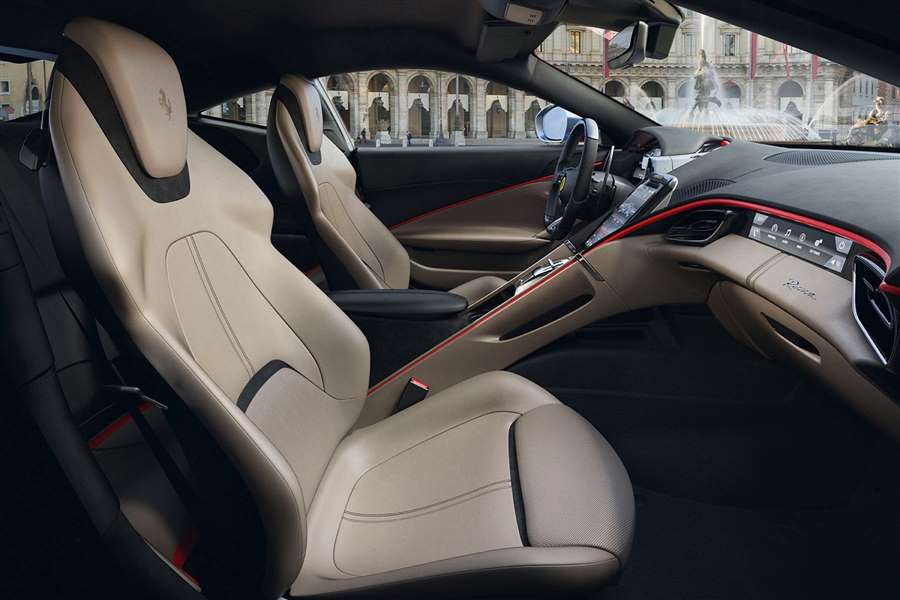
Boot space and storage
The boot itself is pretty good, ranging between 272-345 litres with the seats up or down – which is good enough for two big suitcases or three squashy bags (or ideally some exquisitely tailored luggage), with a usable size and shape to the aperture when the lid itself is open.
Elsewhere, you get a few spots to store things up front, including a single cup holder, plus some slim door pockets and a second cubby in the centre console. There’s an underarm storage bin too with a USB socket and 12v charger.
The styling of the Roma’s interior divides the driver and passenger into two different pods – the latter even gets their own screen showing options like the speed and revs, audio, and car settings. Plus the trademark chequerplate in the footwell to brace themselves on.
While there are a few key references to previous Ferrari cabins, this new layout is quite a divergence from what has come before, but in a welcome way.
Infotainment and tech
The new infotainment suite (first seen in the SF90) includes a 16-inch curved driver’s display with three views – a minimalist one for sporty driving, a full map view for long trips, or a mixture of both with a characteristic big centre tacho. To the left of this is an 8.4-inch portrait touchscreen not entirely unlike the one in a McLaren.
Ferrari has always been good at giving the driver just the right amount of information and functions so you can concentrate entirely on the job of driving, but as time and technology has moved on, the button count has naturally increased.
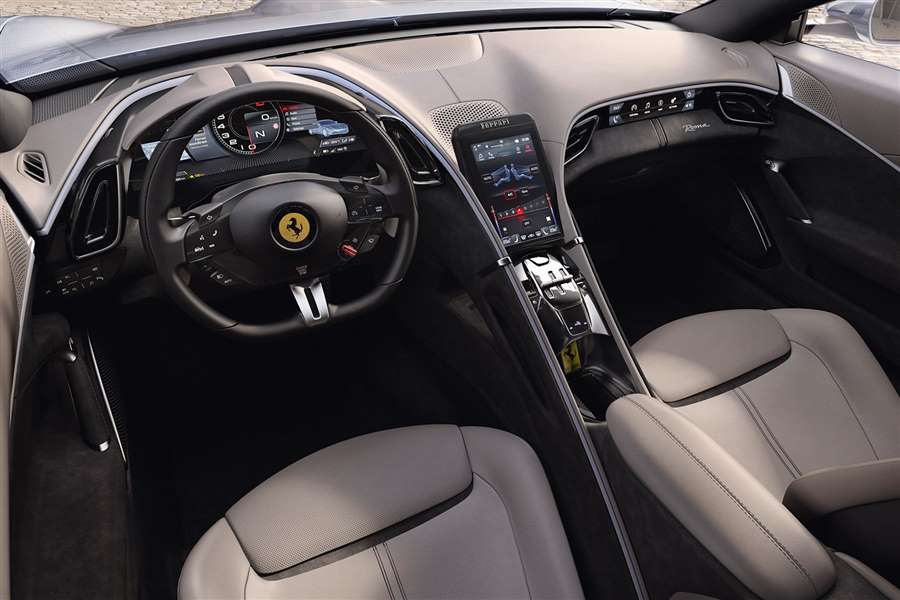
As a car designer you can either strip this all away to leave a more focussed dashboard, or go wild with switches and dials to make it simple to use. The Roma attempts to do both.
That means loads of touch sensitive controls that are lit up when being used but invisible when not, to give you plenty of control over the car’s various functions without looking like an explosion in a button factory.
In fact the only physical cockpit controls are for the windows, gearbox, and launch control. Then on the wheel you get proper buttons for the lights, cruise control, wipers, and indicators. The gearbox is arranged to look a bit like an open-gated manual shift, which is a nice touch.
Even the engine start is a touch sensitive pad, as are those which you use to control the functions on the driver’s screen.
2021 Ferrari Roma gear engine start buttonEnlarge0videoEnlarge40photo
As such this leaves the wheel itself looking clean without sacrificing functionality. The only downside to this was a small amount of lag and lack of sensitivity in the touch controls, meaning they’re not as intuitive as we’d like.
The shift paddles are still massive and epic, though, so zero complaints there.
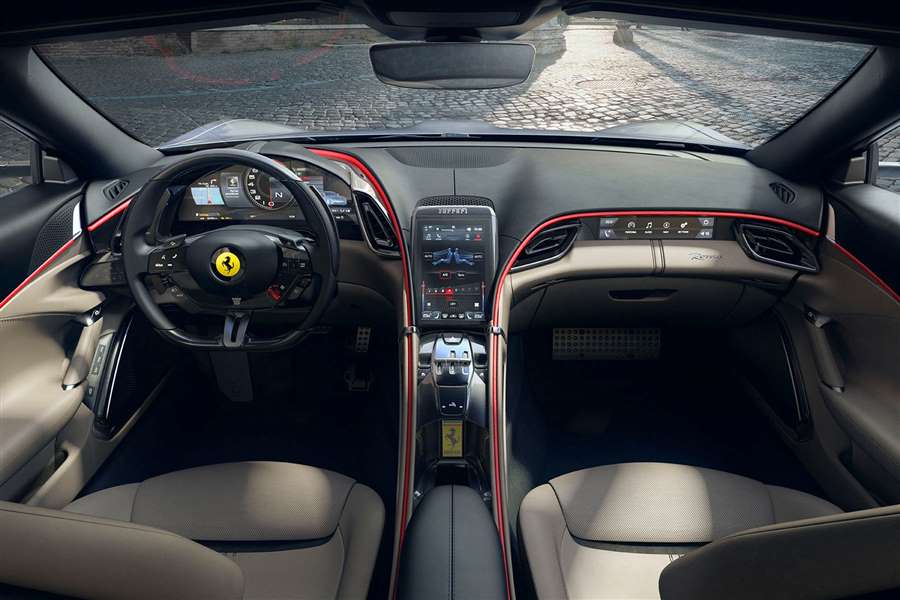
In an area where the Roma obviously needs to perform well, the comfort levels of this corner-carving Ferrari sportscar are surprisingly high, all things considered.
Taller drivers on the Parkers team found the headroom a bit restricted, so that’s worth taking into account, plus the pedals have been offset slightly in the swap to right-hand drive. Neither of these add up to a particularly uncomfortable driving position, but can induce a bit of back or leg pain on a long drive. Those of a shorter stature found no problems at all.
The seats are quite hard but with adjustable bolsters you can get them into the right shape, and their firmness offers a good amount of support that means you don’t end up slouching.
In one of the more laid-back modes it’s easy to imagine taking the Roma on a long and taxing drive. The engine noise never really goes away but it’s muted enough on the motorway, and there’s less tyre and wind rush than expected, too. This isn't ever going to be a Bentley Continental GT, but you won't necessarily wince at the prospect of covering a longer journey in it.
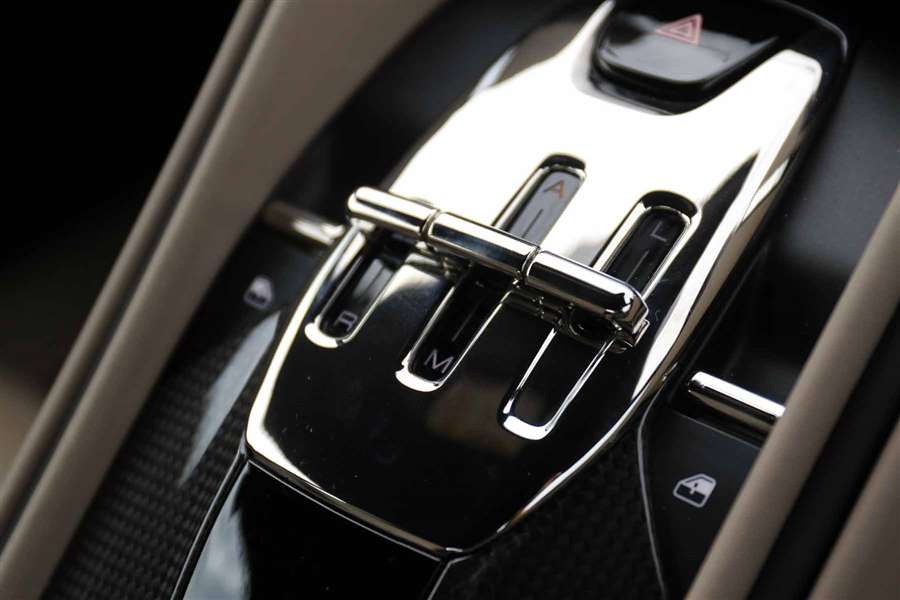
Best of all the ride is comfy enough for all but the lumpiest of UK roads, and when you turn the Manettino dial up to the sportier modes, you’ve got the option of instantly slackening the suspension off by pressing it and activating Bumpy Road mode.
Ferrari Roma running costs and mpg
Let’s keep this brief because nobody is buying a Ferrari under the pretext that it’s going to be cheap to run. This is a car that needs looking after properly rather than cutting corners on consumables.
MPG and CO2
Happily though, thanks to a combination of a slippery profile and less weight, the Roma is more fuel efficient than the Portofino, with 21mpg and 255g/km of CO2 output on offer.
As you’d imagine it also uses less fuel than an F8 Tributo, so while overall it’s still quite thirsty, within the context of the Ferrari range it’s actually pretty good.
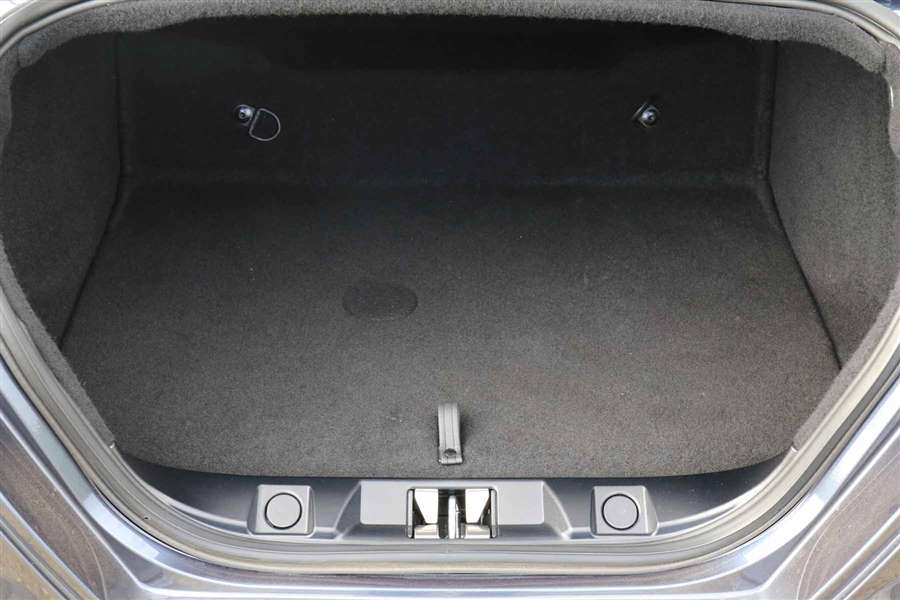
While the mechanicals under the skin of the Roma have been used elsewhere in the range for several years, the new tech inside the cockpit is less proven.
2021 Ferrari Roma key fobEnlarge0videoEnlarge40photo
That said, with fewer moving parts than older, button-filled Ferraris there is technically less to go wrong, individually, so you shouldn’t have much cause for concern in this department. The Roma also comes with a four year warranty.
Servicing and maintenance
There’s also a seven-year Genuine Maintenance programme offered by Ferrari, which includes regular servicing (intervals of 12,000 miles or one year) which promises ‘meticulous checks’ of the entire car.
In essence, there's not much to worry about.
Ferrari Roma engines and performance
Sure, Ferrari has more powerful models in its line-up but once you’ve gone past the 500hp mark there are few occasions on the road where performance feels lacking. Typically there was no point during our time with the Roma that it lacked the answer to a question asked by our right foot. The Roma's reserves feel bottomless, as befits its sports touring nature.
A 3.8-litre V8 and two turbos means 620hp and 760Nm of torque, and 0-62mph ticked off in 3.4 seconds. While a top-end rush has been deliberately engineered in, it's easy enough to keep the rev needle in the mid-range and find more than adequate power. There's no need to drop loads of gears or wait for the boost for the turbos to arrive, it’s just ruthlessly fast, all the time.
It’s not one dimensional though - the different driving modes accessed by the Manettino switch on the steering wheel all offer very distinctive power deliveries, ranging from soft and progressive in Wet and Comfort through to the sharper and more responsive Sport and Race – here the accelerator barely needs to be brushed in order to deliver a surge of forward momentum, but in its more moderate modes, the long travel throttle pedal needs a good push to get going.
Race mode might sound intimidating but it’s the one tuned for the most amount of fun on the road, rather than setting new personal best lap times at Fiorano. This fastest setting gives the Roma breath-taking pace and delivers the full 760Nm, although you’ll need to be in 7th or 8th gear to get it, because the torque on offer increases as you climb the gears.
Compared to the old Portofino (there’s a new M variant with a new gearbox) the Roma has an extra ratio in its eight-speed dual-clutch ‘box, and the lower gears have been made shorter. That means punchier acceleration and lazy cruising – the car is barely ticking over at motorway speeds.
As with the Jekyll and Hyde power delivery, the gearbox also displays impressive duality - able to blur its ratios seamlessly or deliver pin sharp shifts that punctuate heavy braking moments with a loud flare of revs.
Left to its own devices and driven at anything less than flat out, it did seem keen to get into the highest possible gear, but turn up the heat a little and shifts are completed with Ferrari’s trademark telepathy. There’s still enough reward on offer in using the brilliantly clacky and large column-mounted shift paddles, though, to convince you into manual mode every now and again.
The engine can be quite restrained in volume especially when cruising in top gear where its song is barely present. Although this is never the case on start-up where it is consistently flamboyant. With more enthusiastic driving comes a satisfying soundtrack - if not quite as soaring as older V8 Ferrari models - that is full of bass and gravel at low rpm and a higher pitched howl closer to the redline.
All-in-all this makes the Roma a versatile car - equally happy wafting about as it is picking your favourite B-road to bits. But more on that in the next section.
As a bit of a two-things-in-one-car the Roma runs the risk of feeling compromised, particularly in the often-opposing areas of comfort and handling. To an extent it does, but only within the framework of Ferrari's more focussed models - it's not as sharp to drive as an F8 or as cossetting as a GTC, but bear in mind that those are high benchmarks.
What it is though is a very usable balance of both - at no point could you describe the suspension as luxuriously soft, but it's fine for daily use, only getting a bit out of shape on really bumpy roads – while the way it handles can easily blow sports cars from other manufacturers into the weeds.
None of this should be a surprise of course, as Ferrari has left nothing to chance by throwing a load of tech at its new coupe. As such you get five modes on the Manettino plus underbody aero (and a pop-up spoiler) to enhance downforce without ruining those sleek exterior lines. Both of these are a first in the Italian manufacturer’s (comparatively) less focussed GT models, and that should give you a sense of its intentions.
As with the engine response, the Manettino gives you a variety of different handling responses from soft to sharp. Somewhat oddly our favourite combination was Comfort mode with the gearbox in manual. This gives you a very relaxed (but still bonkers fast) set up that suits the car's suave and unflustered appearance.
Still, Sport and Race do increase the response from the throttle and steering to very satisfying levels, while firming up the suspension to improve body control. You can dial this back by pressing the Manettino to utilise Bumpy Road mode, which offers a nice balance on UK roads, while still hugging the ground.
When it comes to driving quickly the Roma again offers a breadth of attitudes – if you enter a corner tentatively and feed the power in it'll hook up nicely and fire you out the other side in a neat, grippy manner. However, go in with more confidence and give the gas a big push and the rear end of the car will swing out to a point controlled by lots of clever electronics.
Chiefly this is down to the Roma’s Side Slip Control, which ties together the traction control, electronic differential and something called ‘Ferrari Dynamic Enhancer’ to interpret your inputs and let the rear of the car move around accordingly. It’s essentially a traction control system that lets the rear of the car have a little slide without wiping out, and is capable of making you look absolutely heroic while providing something of a safety net. Even so, this is best explored in a controlled environment.
The steering is quick and linear but not as fast as the F8, making it seem more relaxed and less twitchy on faster roads. The brakes need a good push to get going but when you do there’s plenty of power and feel, although they were a bit grabby and hard to modulate in our test car.
Even so, it took a bit longer to get under the Roma's skin than in current or former mid-engined Ferraris, which usually feel just-right from the off. But those are a very different proposition, and once you get used to the Roma's feel it becomes a very rewarding thing to drive indeed.
Ferrari Roma verdict
Should you buy one?
By the time you’re talking about this sort of pricetag there’s not a lot of point having an argument about whether the Roma is good enough as a motorway cruiser and mountain road slayer or whether you’d be better off buying two Porsche 911s instead. Customers won’t be buying only this car, so this won’t be bought with the same all-rounder considerations as, say, a VW Golf.
That said, it is mightily impressive how convincing the Roma is as a one-Ferrari-to-rule-them-all – sure the rear seats won’t suffice if you regularly need to transport more than two people, but for anyone else this is a suitably useful daily driver that just so happens to be razor sharp when the moment takes you.
In fact, we think it approaches that balance better than the Portofino or California T that came before it and is the ideal starting point for Ferrari ownership. No, the roof doesn’t come down, so it won’t suit those looking to be seen while driving, but as a trade-off the elegant exterior lines and styling more than make up for it.
It gives you just enough of the Ferrari-fizz to leave you wanting more from a model higher up the range, but not so little that in isolation it feels half-cocked.
More impressive is the car’s ability to celebrate an older era of luxury while moving the game on in terms of interior tech and usability. All that without being an exercise in chintzy, throwback styling - it feels distinctly old school but under the skin the Roma is anything but.
Best of all though is the simple stuff – this is a front engined, V8 powered, 2+2 coupe, with no hybridisation or self-driving modes in sight. Enjoy it while you can. If you can.
(parkers.co.uk)
Mercedes is still not giving up on the V12 engine, which is again won by the strongest Maybach
The crown jewel of Daimler's car line has dawned in the Russian configurator, where this extended, stretched, luxury sedan with a twin-turbo 6.0-liter engine and a 9-speed automatic transmission can already be configured and ordered.
Only a day or two after the teaser of the label and photos announced the arrival of the top version of the new generation of Maybach, the first data began to be revealed, albeit by a detour. Namely, while the last mention of Maybach on Mercedes' press pages was in mid-April, announcing the company's 100th birthday, the strongest model first appeared and then disappeared from the company's Russian pages even faster (but not fast enough). So it became clear that the top version is powered by a 6.0-liter twin-turbo engine with a nine-speed automatic transmission.
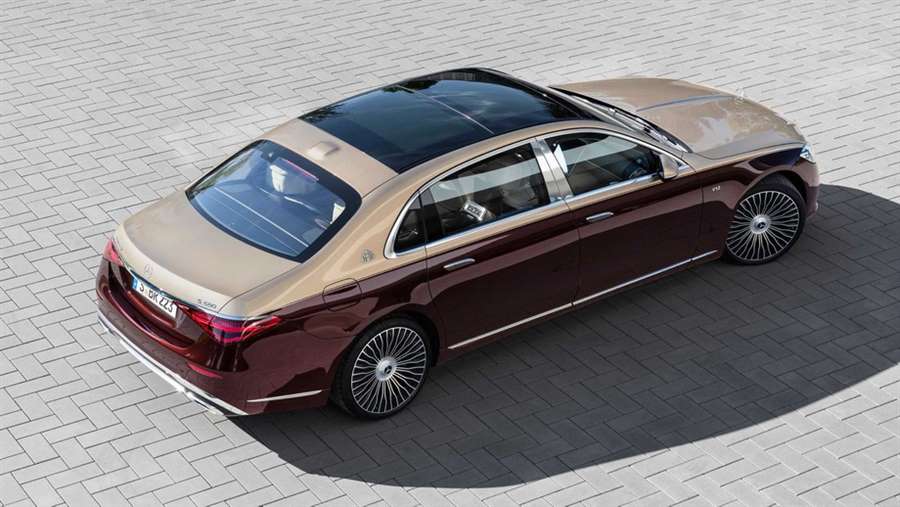
It develops 450 kW / 604 hp and the car fires from a standstill to 100 km / h in just 4.5 seconds. Top speed is electronically limited to 250 km / h. As previously announced, with the V12 engine it gets an all-wheel drive system, instead of sending all that power to the rear wheels as was the case with the old S650 and AMG S65. The Russian configurator also reveals the weight of the car, the weight shows 2,350 kilograms, which makes the acceleration figure even more impressive. The power of 604 hp is lower by 17 hp compared to the previous generation S650. Although torque is not mentioned, it is assumed to be 1,000 Nm as before.
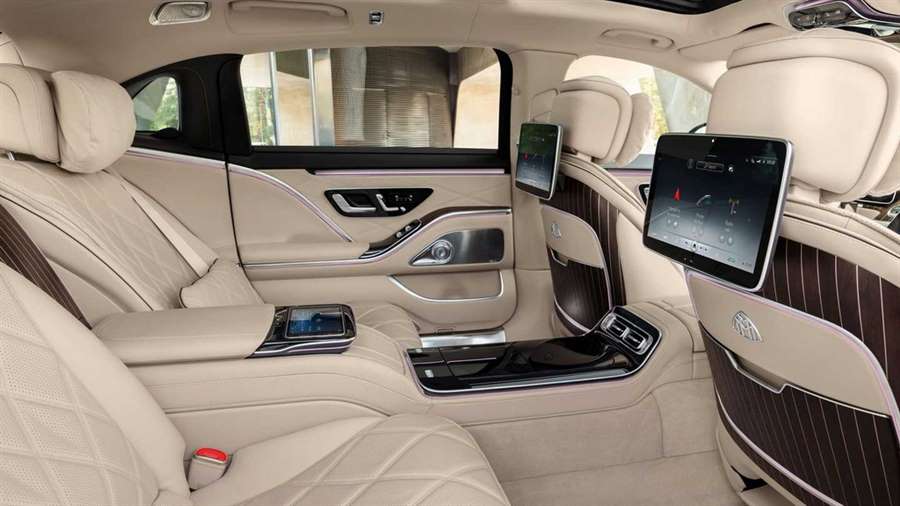
The V12 version will not remain the most powerful S-Class of this generation for long, as Mercedes-AMG is preparing two versions of its luxury sedan. Both should be plug-in hybrids, the S63e with about 700 hp coming later this year and the stronger S73e with about 800 hp arriving later. Meanwhile, the S680 will be one of the most expensive vehicles in the world, not counting supercars and hyperautomobiles. The Russian configurator states the starting price in the equivalent of 310,000 EUR.

